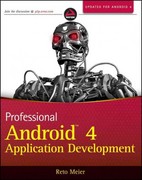Question
Please answer all parts and have 2 files, the code, and test file as mentioned at the end. Part 1: Anagrams Two strings are anagrams
Please answer all parts and have 2 files, the code, and test file as mentioned at the end.
Part 1: Anagrams
Two strings are anagrams if the characters in the first word can be rearranged to make the second word, e.g.'cinema' and 'iceman' are anagrams. "dormitory" and "dirtyroom" are also anagrams.
You may assume for this assignment that both strings must have the same length to be anagrams.
Part 1.1: Anagrams using only strings and lists
anagrams_lst(str1: str, str2: str) -> bool
Implement (including automated unit tests) a functionanagrams_lst(str1, str2)that returnsTrueif str1 and str2 are anagrams,Falseif not.Your solution mayonlyuselist.
Hint: Youranagrams_lst(str1, str2)function needs only one line.
You'll find more hints in Canvas but see if you can come up with a solution before checking the hint.
Note: A student was recently asked to solve this problem at a job interview with Microsoft.
Part 1.2: Anagrams using defaultdict
anagrams_dd(str1: str, str2: str) -> bool
Part 1.1 was fun but didn't require much programming so we'll look at another solution to determine if two strings are anagrams usingdefaultdict. Make a functionanagrams_dd(str1, str2)that also returns True or False, but uses the following strategy:
- Make adefaultdict of integers,dd
- Go throughstr1, adding each character toddas the key and incrementing the value by 1. E.g. saystr1 == "dormitory". After this step,dd == {'d': 1, 'o': 2, 'r': 2, 'm': 1, 'i': 1, 't': 1, 'y': 1}
- Go through each character,c, instr2. If the character is a key indd, then decrement the value ofdd[c]by 1. Ifcis not a key indd, then you know thatstr1andstr2are not anagrams becausestr2has a charactercthat is not instr1.
- If you successfully processed all of the characters instr2, then iterate through each of the values in dd to insure that every value == 0.This must be true if the two strings are anagrams.In our example above,dd == {'d': 0, 'o': 0, 'r': 0, 'm': 0, 'i': 0, 't': 0, 'y': 0}ifstr2 == "dirtyroom". If any value is not 0, then returnFalse, else returnTrue.
Hint: You might find Python'sany(iterable)statement helpful depending upon your solution.any(iterable)evaluates to True if any of the elements in the iterable are True. E.g.any(0, 0) == False,any(0, 1, 2, 3) == True.
Part 1.3: Anagrams using Counters
anagrams_cntr(str1: str, str2: str) -> bool
Determine if two strings are anagrams using onlycollections.Counters.
Part 2: Covers Alphabet
covers_alphabet(sentence: str) -> bool
Make a functioncovers_alphabet(sentence)that returnsTrueif sentence includes at least one instance of every character in the alphabet or Falseusing only Python sets. E.g.
- covers_alphabet("AbCdefghiJklomnopqrStuvwxyz")is True
- covers_alphabet("We promptly judged antique ivory buckles for the next prize")is True
- covers_alphabet("xyz")is False
Hints:
- Be sure to convert the input string to lower case before comparing.
- Here's a list of all characters that you can copy/paste rather than typing it yourself:abcdefghijklmnopqrstuvwxyz
- Here's a few strings thatdo coverall the characters in the alphabet:
- "abcdefghijklmnopqrstuvwxyz"
- "aabbcdefghijklmnopqrstuvwxyzzabc"
- "The quick brown fox jumps over the lazy dog"
- "We promptly judged antique ivory buckles for the next prize"
- The string tested against the alphabet must include at least all of the characters in the alphabet,but may also contain others, E.g. the sentence, "The quick, brown, fox; jumps over the lazy dog!" is not grammatically correct but it does cover the alphabet.
Part 3: Web Analyzer
web_analyzer(weblogs: List[Tuple[str, str]]) -> List[Tuple[str, List[str]]]
Your boss has been collecting logs with the names of each employee and the websites visited by that employee.
Make a functionweb_analyzer(weblogs),along with automated tests, to make a summary of the weblogs with eachdistinctsite and a sorted list of names ofdistinctpeople who visited that site. The input toweb_analyzeris alistwith the following form
[('Nanda', 'google.com'), ('Maha', 'google.com'), ('Fei', 'python.org'), ('Maha', 'google.com')] where each item in the list is a tuple with the employee name and the website he/she visited.Note that each employee may visit multiple websites and each website may be visited more than once.Your web_analyzer()function should summarize the data and return a list with the following form
[('website_1', ['employee_1', 'employee_2]), ('website_2', ['employee_2', 'employee_3])] where each distinct website appears oncein alphabetical orderalong with a sorted list ofdistinctemployees who visited that website.The items in the result should be sorted in ascending order by website and the employees names should be sorted in ascending order.
For example,
weblogs: List[Tuple[str, str]] = [ ('Nanda', 'google.com'), ('Maha', 'google.com'), ('Fei', 'python.org'), ('Maha', 'google.com'), ('Fei', 'python.org'), ('Nanda', 'python.org'), ('Fei', 'dzone.com'), ('Nanda', 'google.com'), ('Maha', 'google.com'), ] summary: List[Tuple[str, List[str]]] = [ ('dzone.com', ['Fei']), ('google.com', ['Maha', 'Nanda']), ('python.org', ['Fei', 'Nanda']), ] self.assertEqual(web_analyzer(weblogs), summary)
Note: The websites and employee names must be sorted in ascending order.
Hint: My implementation of theweb_analyzer()function has only 4 lines of code and usesdefaultdict(set), and list comprehensions.
Deliverables
File Structure
Separate your code into two files- one for code logic and one for unit test. It's always a good practice to separate the code and the test.
You are going to havetwo .py files, one for the logic, one test file.
Step by Step Solution
There are 3 Steps involved in it
Step: 1

Get Instant Access to Expert-Tailored Solutions
See step-by-step solutions with expert insights and AI powered tools for academic success
Step: 2

Step: 3

Ace Your Homework with AI
Get the answers you need in no time with our AI-driven, step-by-step assistance
Get Started


